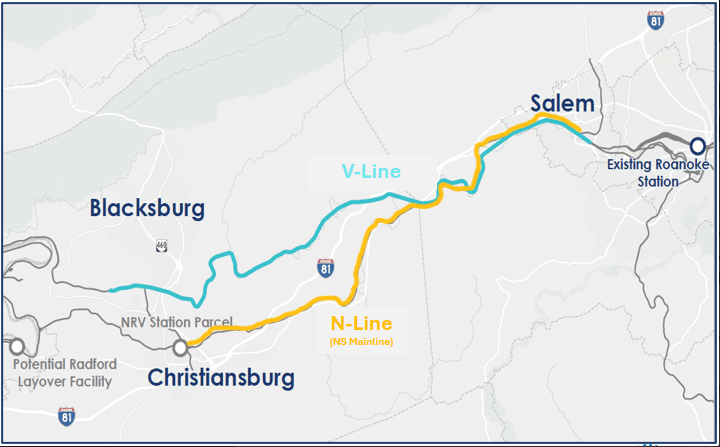
CHRISTIANSBURG, Va. — Virginia Gov. Glenn Youngkin led the list of officials on hand Thursday (April 24, 2025) for groundbreaking on the New River Valley Rail Project, which will allow extension of Amtrak service from Roanoke, Va., to Christiansburg. When that service begins, it will be the first time the New River Valley has had passenger service since 1979.
“We are here today because people came to the table and worked together to execute a new and dramatically better deal — one that accelerates the return of passenger rail service to the New River Valley years earlier, on a better line, and at a much lower cost to Virginia’s taxpayers — than the one I inherited,” Youngkin said at the event, according to a press release. “I look forward to all that this station will do to support and grow such an important region of the Commonwealth.”
The groundbreaking follows a deal announced last summer in which the state agreed to buy the state’s former Southern Railway line between Alexandria, Va., and Manassas, Va., while rescinding an earlier agreement to purchase 28 miles of former Virginia Railway trackage west of Roanoke, Va., into the New River Valley [see “Virginia, Norfolk Southern greenlight …,” Trains News Wire, Aug. 28, 2024]. Studies had determined it could have cost up to $1 billion to prepare the route to reach Christiansburg and precluded eventual extension to Bristol, Va.
Instead, the project launched Thursday will include service on the original Norfolk & Western line to Christianburg, where a historic station will be renovated and a new platform built, along with a parking lot and access roads. Work will also include an Amtrak layover facility 10 miles away in Radford, Va.; and track and signal improvements.
The project is estimated to cost $265.4 million. Preliminary work began in February but full construction will commence this spring. Service is projected to begin in 2027, with trips taking 50 minutes between Christiansburg and Roanoke and about six hours between Christiansburg and Washington, D.C.
“The groundbreaking of the New River Valley Project represents what can be achieved through strong partnerships,” said Virginia Passenger Rail Authority Executive Director DJ Stadtler. “This project would not be possible without the shared vision of providing Virginians with a rail alternative.” Said Jennifer Mitchell, Amtrak executive vice president of strategy and planning, ““This groundbreaking is a critical milestone in the Transforming Rail in Virginia project that will ultimately increase rail service in the Commonwealth.”
Additional details on the project are available at the VPRA website. Video from the event is available here.
Service on the VRPA’s Roanoke corridor began with a single round trip between Lynchburg, Va., and Washington in 2009 and was subsequently extended to Ronoke, with a second trip added. Ridership has grown from just over 100,000 in 2009 to more than 343,000 in 2024.






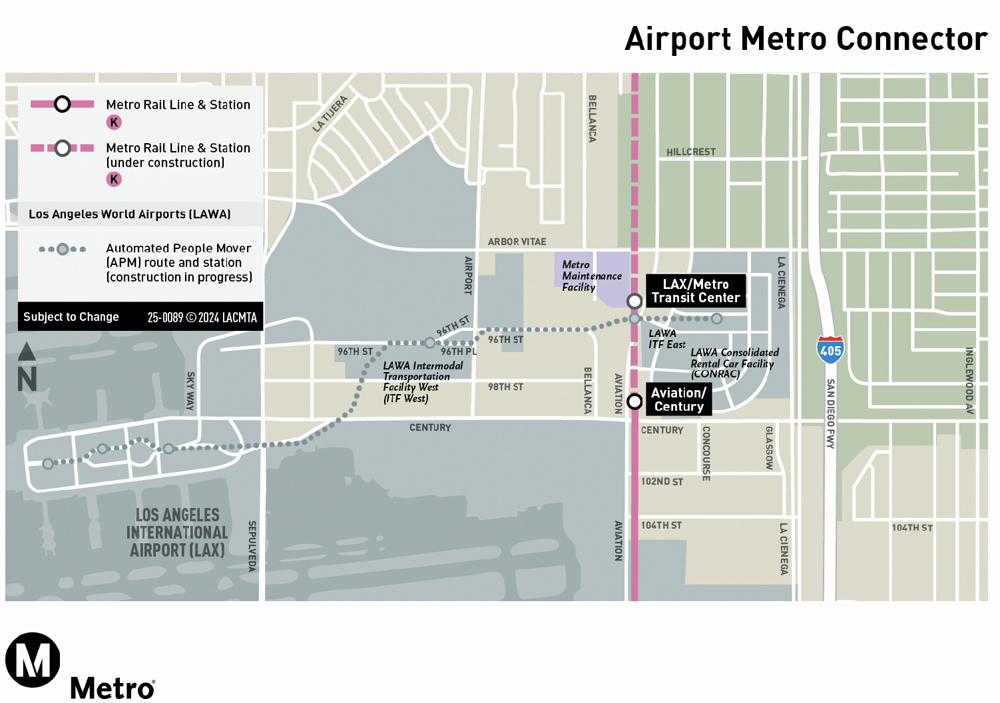
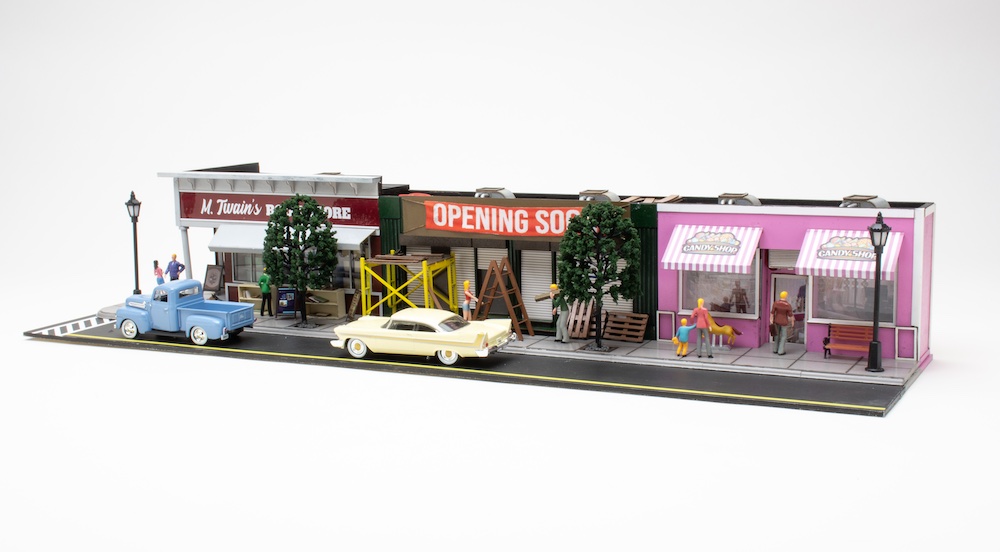
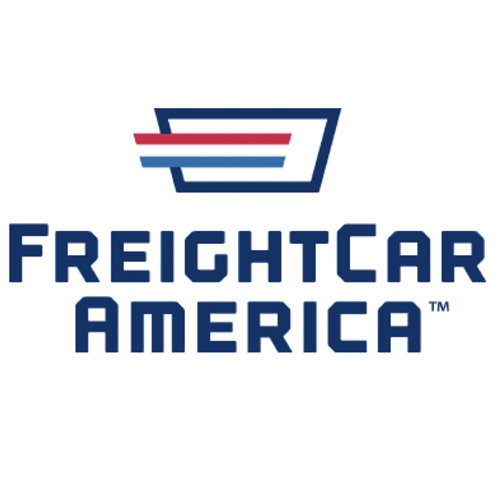
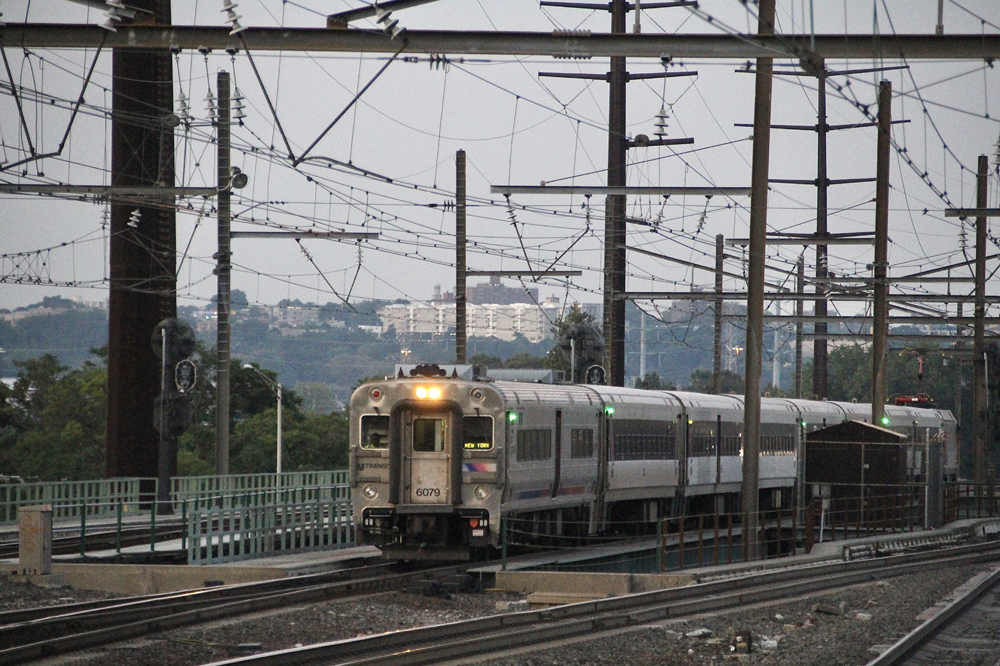
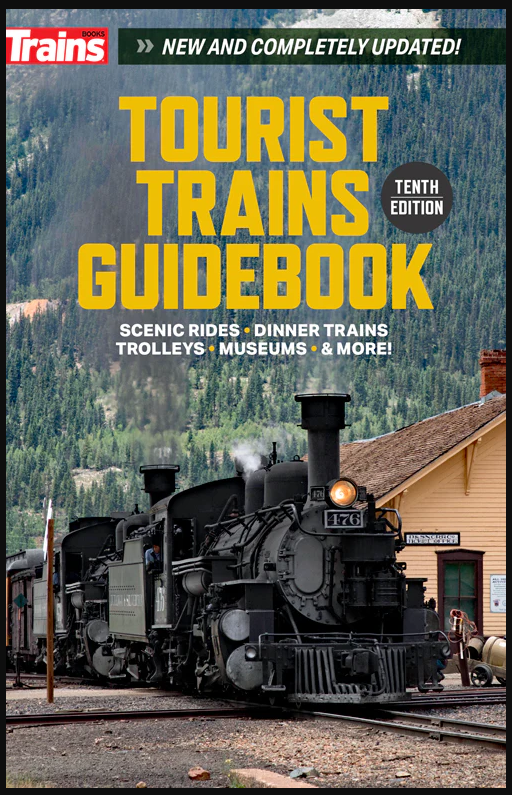
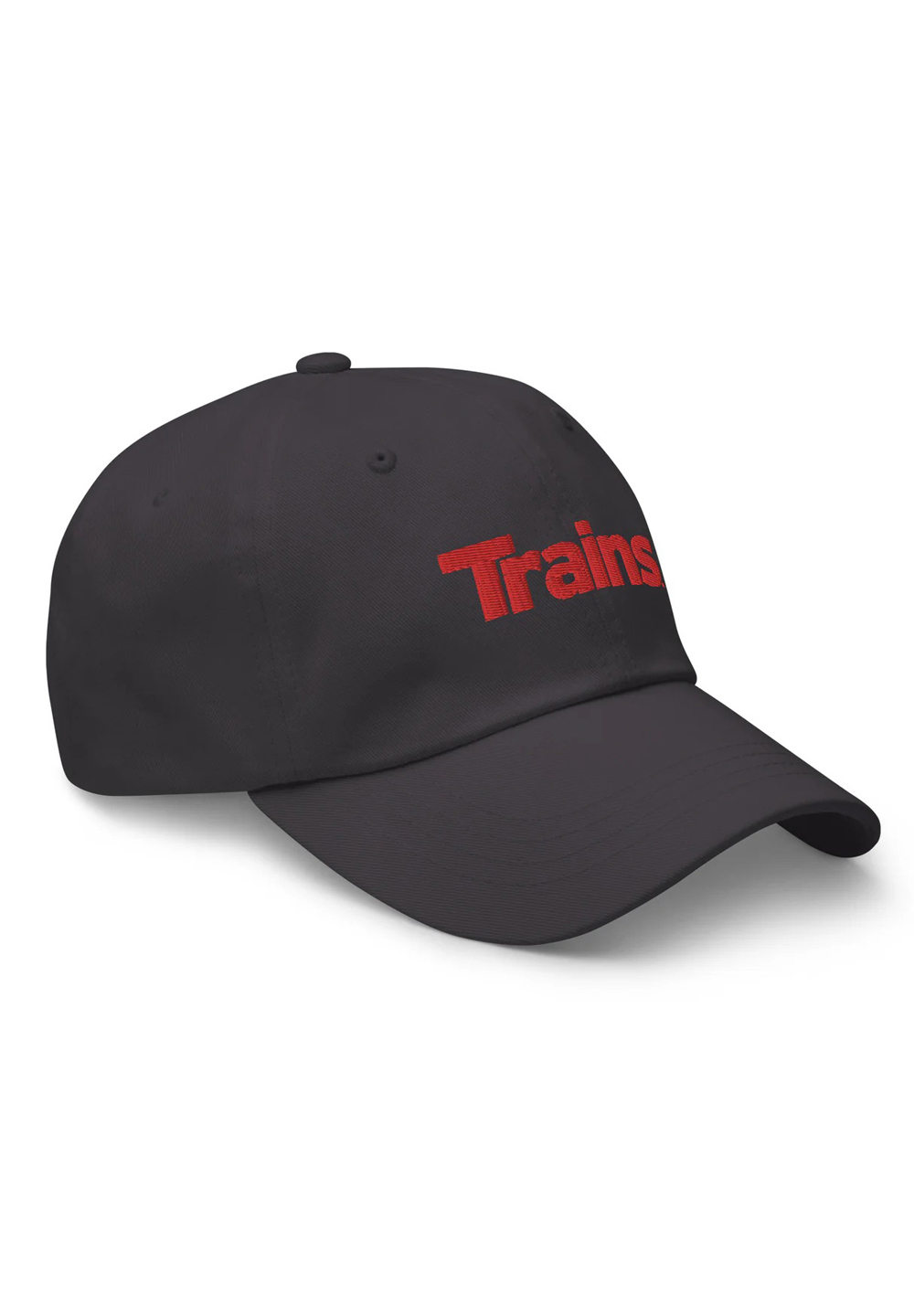

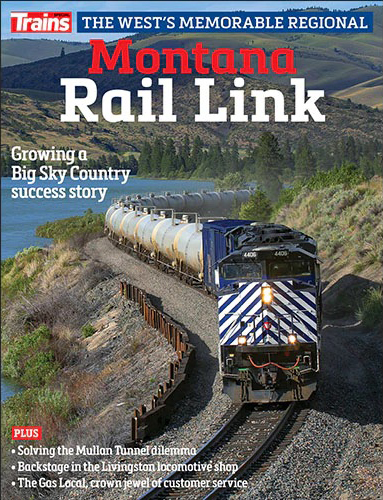
Virginian Railway, not Virginia.
Hopefully, Virginia will continue its progress on advancing passenger rail by convincing Amtrak to reroute the CARDINAL off the CSX single-track line between Culpepper (CLP) and Charlottesville (CVS), it currently uses, onto the NS double-track line between those cities. This would speed-up the CARDINAL by 26 minutes! This reroute would require a back-up move on the existing connecting track at the Charlottesville Station, OR Virginia could fund a new connecting track under the Main Street that would allow the CARDINAL to operate through the Charlottesville Station without a backup. This would further promote a daily CARDINAL operation.
Of course it makes no sense, unless this one isn’t Amtrak-funded, and Miami, however knotheaded, would be.
So Amtrak agrees to a layover facility 10 miles away for a tiny city of 23,348 (ranked 238 out of 387 metropolitan areas in the U.S.) but won’t do 4 miles in massively popular Miami to serve it’s bustling modern airport facility which they admit will increase ridership?
The long layover distance caught my attention too, but remember: since this is a state-supported train, Virginia is on the hook for the costs associated with the long deadhead/layover move. The Miami trains are long-distance trains, so Amtrak would have to pay those costs instead.
My opinion is the emphasis for Amtrak, whether it is long distance or state supported corridors, is should be serving city centers as the best outcome over the long haul. Yes, Miami was cluster but on the bright side if somehow someway that Amtrak can find itself sharing Brightline’s Miami central station would be a much better plan. I think it is doable just not sure of the logistics from routing down to the platform requirements.